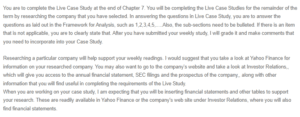Tesla’s Approaches to Raising Funds
In recent years, Tesla Inc. raised its funds through six approaches; issuing ordinary share stock, selling convertible bonds, lines of credit, selling sections of the firm, and customer deposits (Deboard, 2017). Issuing of shares has been beneficial to Tesla, given the stock has exhibited capital gains in the past. The main drawback associated with raising funding through stock is the dilution of shares for the current ordinary stock investors. In 2017, Tesla raised 250 million by issuing common stock.
Tesla has also been selling bonds to raise high capital amounts. In 2017, the firm issued a bond worth 1.8 billion that had a coupon rate of 5.3% and is expected to mature on 17th August 2025 (Ofer& Raviv, 2017). The advantage of Tesla’s bonds is its attractiveness to investors, which is manifested by the high coupon rate, making it among the primary methods of raising capital. The main drawback of this approach is that firms tend to accumulate liabilities and use most of their finances in servicing their obligations. These funds would be employed for better use, such as paying out dividends to shareholders or investing in research and development. Furthermore, in the event of bankruptcy, the bondholders stand a high chance of claiming the firm’s assets and would even initiate court proceedings in liquidating the firm.
Tesla has also been issuing convertible bonds to raise funds. The advantage of this approach is that, in case of default, it can be converted to ownership (Deboard, 2017). The disadvantage is that the time of conversion is beyond the company’s control, meaning convertible bondholders could take advantage and redeem the bond at the time they stand to benefit most. Tesla has also been issuing lines of credit to seek funding. The main benefit accrued from this approach is that it can impede the future issuing of equity and bonds. As a result, it prevents the dilution of Tesla’s stock through ordinary shares and convertible bonds. Furthermore, Tesla issued convertible notes that earned an interest of 2.375% and had a maturity date of 2022 (Ofer& Raviv, 2017).
Tesla has been raising funds by selling parts of the firm. Before venturing into an IPO in 2010, Tesla was partly owned by Toyota and Daimler, who had purchased sections of the firm; the two firms also contributed technical knowledge to Tesla’s operations (Ofer& Raviv, 2017). In 2017, China’s Tencent purchased 5% of Tesla. The drawback of this technique is that it grants one ownership of the firm’s operations; the benefit is that a person can contribute to the technical knowledge of the firm. Lastly, Tesla Inc. raises funds through customers’ deposits; for instance, 450,000 clients paid $1,000 in advance for the Model 3 sedan. In this case, the total amount from customers’ deposits was $4.5 million (Ofer& Raviv, 2017).
Tesla’s market capitalization equals 60 billion; equity’s book value is 5 billion, while the total debt is $10 billion. In 2013, three years after its initial issuance of ordinary stock, Tesla’s share price was $50 and $220 in 2014. In 2017, it traded at $355. Nonetheless, Tesla has been exhibiting negative cash flow, given it is at the expansion stage of the business. The firm is still undertaking infrastructural development of its factories. Nonetheless, the value of Tesla’s stock and bonds is expected to increase in the future with an increase in cash flow.
References
Ofer. R & Raviv.A (2017). To Bond or Not to Bond? Tesla’s Financing Strategy. Retrieved from https://www.kellogg.northwestern.edu/executive-education/the-kellogg-experience/thought-leadership/tesla-bonds.aspx
Deboard. A (2017). Tesla has 6 ways to raise money — here are the pros and cons of each. Retrieved from https://www.businessinsider.com/how-tesla-can-raise-money-2017-8?IR=T
ORDER A PLAGIARISM-FREE PAPER HERE
We’ll write everything from scratch
Question

Tesla’s Approaches to Raising Funds
You are to complete the Live Case Study at the end of Chapter 7. You will be completing the Live Case Studies for the remainder of the term by researching the company that you have selected. In answering the questions in Live Case Study, you are to answer the questions as laid out in the Framework for Analysis, such as 1,2,3,4,5,…..Also, the sub-sections need to be bulleted. If there is an item that is not applicable, you are to clearly state that. After you have submitted your weekly study, I will grade it and make comments that you need to incorporate into your Case Study.
Researching a particular company will help support your weekly readings. I would suggest that you take a look at Yahoo Finance for information on your researched company. You may also want to go to the company’s website and take a look at Investor Relations,, which will give you access to the annual financial statement, SEC filings and the prospectus of the company,, along with other information that you will find useful in completing the requirements of the Live Study.
When you are working on your case study, I am expecting that you will be inserting financial statements and other tables to support your research. These are readily available in Yahoo Finance or the company’s web site under Investor Relations, where you will also find financial statements.

